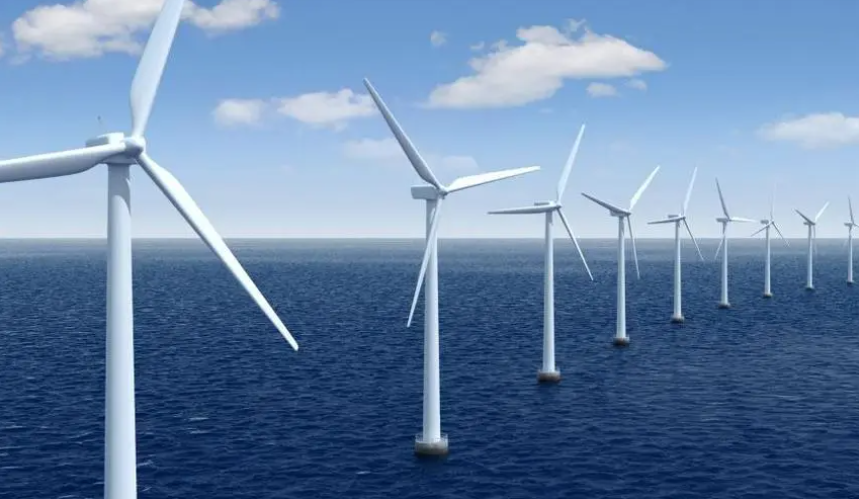Emerald Offshore Wind, a namesake entity owned and operated by Irish developer Simply Blue Group, is the developer of the project.
In January 2021, Shell signed an agreement with Simply Blue Energy to acquire a 51% stake in Simply Blue Energy Kinsale venture, which was established to develop the Emerald Project.
However, Shell decided to end its involvement in the floating offshore wind farm in September 2022.
PROJECT GALLERY
In May 2023, Simply Blue Group signed a partnership deal with EDF Renewables to develop the Western Star and Emerald floating wind projects. The agreement will form a 50:50 joint venture, subject to merger clearance, which will work to advance the two projects.
Construction works of Emerald Project are expected to commence in the third quarter of 2027. The project will be built in two phases, with full commissioning expected to be achieved in 2032.
After commissioning, Emerald Project will generate 4,380GWh of electricity per year, enough to power more than 1 million homes in Ireland. This power is equivalent to offsetting 21.5% of fossil fuel currently being used to generate electricity in the country.
Additionally, the project will help Ireland to reach its goal of 7GW of offshore wind by 2030 to reduce carbon emissions.
Emerald Project Location
The Emerald Wind Project will be located around 35-60km from the coast, south of the Old Head of Kinsale in Co. Cork, Ireland.
The site lies near the decommissioned Kinsale Gas Field, as well as in proximity to key existing maritime and energy infrastructure in Cork Harbour.
Overall, the wind farm will cover an area of around 766km2. Water depth in the region ranges between 80m and 100m relative to the Lowest Astronomical Tide (LAT).
Emerald Project Infrastructure
Emerald Wind’s main offshore infrastructure will consist of Wind Turbine Generators (WTGs), floating platforms, moorings and anchors, offshore substations, offshore inter-array and export cables, and scour and cable protection.
The onshore infrastructure will consist of cable landfall and transition joint bay, onshore export cables, project substation, and a grid connection to renewable park.
Emerald Floating Wind Project Details
The Emerald Floating Wind Project will be constructed in two stages.
The first stage of around 400MW (Sirius) will commence operations in 2030 and the second stage of up to 900MW (Endurance) aims to become operational by 2032.
Overall, Emerald will have 60 to 87 WTGs, each with power capacity of 15 to 22MW. The towers of the turbines will be made of tubular steel.
The WTGs will have rotor diameter between 220-320m, with hub height ranging from 160m to 210m.
WTGs will be placed on floating platforms moored to the seabed, with semi-submersible and tension leg platform options are under consideration.
The moorings type, which will secure the platforms, will be finalised following the approval of additional designs. Spar, tension leg, barge, and semi-submersible types of moorings are considered for the project.
The project may use up to three conventional substations or up to five subsea substations. These substations will transmit the renewable power generated by the turbines to the shore.
The substations will be connected to each other by 220kV interconnector cables.
The WTGs will be connected by inter-array cables, which will then be connected by a cable section to the offshore substation.
The cables will have a three-core dynamic 66kV design, which may be increased to 132kV in future, and a diameter ranging from 140-200mm. The total length of the cables to be laid for the project will be around 300km.
The inter-array cables will be laid on surface or buried with scour and cable protection.
Power Transmission
Emerald may use High Volume Alternating Current (HVAC) or High Voltage Direct Current (HVDC) transmission or a combination to transmit power onshore.
The offshore wind project will use up to three export cables if HVAC is used. The transmission network will then include three 3-core 220kV HVAC subsea cable with a diameter of approximately 260mm, and at least one fibre optic cable within each export cable for communications and cable monitoring.
If the project uses HVDC, then a single HVDC export cable at 320kV would replace at least two or even three HVAC circuits. It will have a symmetrical monopole configuration using two fully insulated cables (positive and negative) laid together or separately. This transmission system will also use at least one fibre optic cable within each export cable for communications and cable monitoring.
The export cables will be around 45km to 65km long, depending on the final offshore substation location and cable routes.
The potential landfall site will be located to the east or west of Cork Harbour.
At landfall, the power export cable will be buried with Open Cut Trenching (OCT) and/or Horizontal Directional Drilling techniques.
Subsequently, the power export cable will transition into the onshore cable in a Transition Joint Bay (TJB). The length of the cable will be between 1km and 21km.
The potential grid connection locations in Cork area were evaluated. The developer also held discussions with Irish state-owned electric power transmission operator EirGrid.
According to Emerald, the initial 400MW phase of the project will be connected at 220kV to the Transmission System in 2030. The subsequent 800MW-900MW may be fed through an alternative route, such as a Renewable Energy Park.
If the project is not directly connected to the transmission system, the project’s export system may be a private connection.
Contractors Involved
Ove Arup & Partners Ireland Limited drafted the Environmental Impact Assessment (EIA) Scoping Report of the project for Simply Blue Group.
Green Giraffe Advisory served as the sole financial advisor of the Simply Blue Group in a transaction between Shell and Simply Blue when Shell acquired 51% interest.
Fieldfisher Ireland also advised Simply Blue Energy in the agreement with Shell New Energies.
